Roborock Q7 Max+ review: A reliable and useful companion
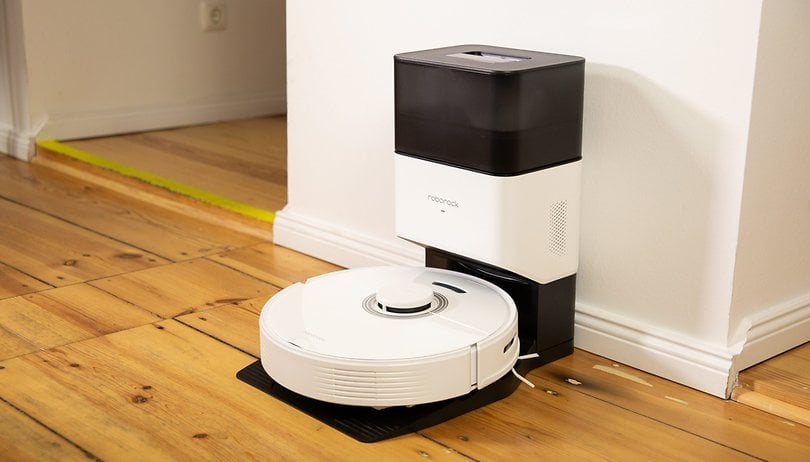

The Roborock Q7 Max+ is a robot vacuum and mop with an elegant design—and it comes with a self-cleaning station. After six weeks of using the robot vacuum cleaner regularly, our experience with the device was pretty solid in such a hype market as Smart Homes. Find out in this Roborock Q7 Max+ review why this robot vacuum cleaner deserves your attention in 2022.
-
Also read: How to choose the best robot vacuum cleaner
Good
- Extremely easy to assemble
- Hybrid tank for dust and water
- Self-cleaning station
- No cameras
- Runtime of 180 minutes
Bad
- Emptying the dust bin emits a very loud sound
- Only one cleaning cloth in the box
- Average mopping performance

Roborock Q7 Max+ in a nutshell
Among the segment of standalone devices for Smart Home, robot vacuum cleaners are perhaps the most relevant category after Smart TVs and smart lighting. Therefore, the fact that they are well-established devices in the industry already makes our level of demand high. In this sense, the Roborock Q7 Max+ is an excellent example of quality.
As you are about to see in this review, the Q7 Max+'s suction performance stands out, as do the software options offered by Roborock's app. In addition, the battery capacity of up to 180 minutes for a full cleaning shift can also be considered a very positive point.
Available on the global market, the Roborock Q7 Max+ costs $865, with vacuuming, mopping, and self-cleaning options. I would venture to say that for this price the Plus version of this series has one of the best quality-to-price ratios on the market.
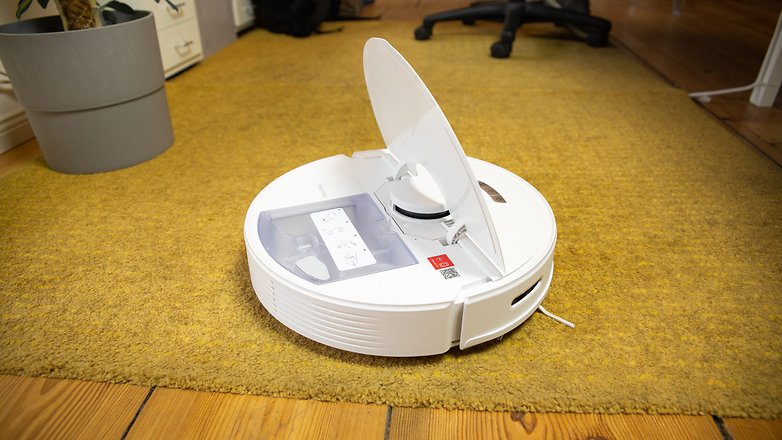
Unboxing and setup
The Roborock Q7 Max+ is a vacuum cleaner with a self-cleaning dock, so it's going to occupy more space in your living space than the majority of vacuum robots on the market with their tiny docks. However, it is quite discreet and simple to install. In the box, besides the vacuum cleaner, we find a hybrid dock for charging and self-cleaning that needs to be assembled first.
What I liked:
- Surprisingly easy to assemble.
- Quick setup with Wi-Fi.
- Versatile mapping system.
- No cameras.
What I didn't like:
- Only one cloth in the box.
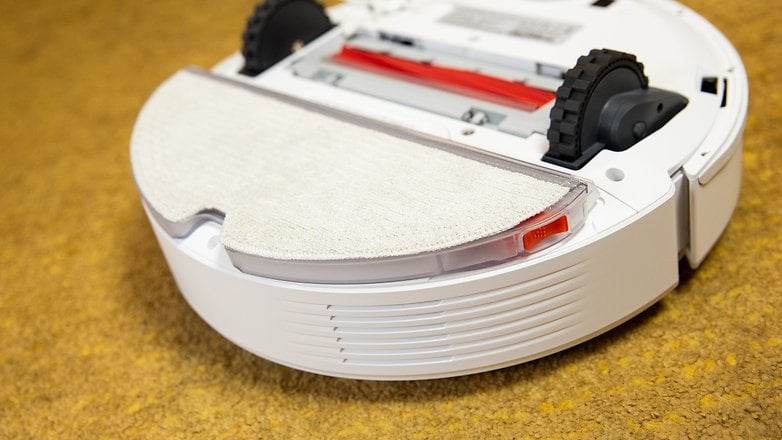
For installation, Roborock sends a tool to thread the screws from the base to the cleaning station. For those who are used to the DIY concept of furniture assembly from Ikea and other such manufacturers, this initial step is very easy. The important thing is to keep the base stable. Once assembled, simply fit the cleaning bag and the power cable. The assembly is surprisingly simple .
In addition to vacuuming, Roborock's robot also supports mopping, so it ships with one combined tank for dust and water as well as a floor cloth that must be installed underneath the robot. After fitting these parts together, the Roborock Q7 Max+ is ready for its first setup. The assembly is very well explained in the instruction card in the box.
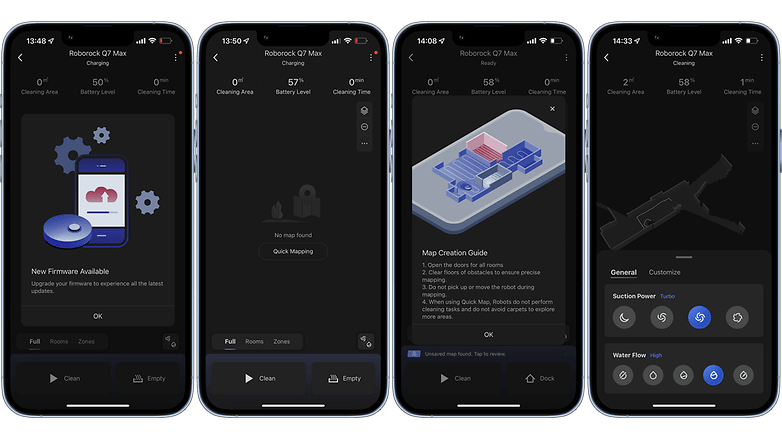
The Roborock app (Android | iOS) is the gateway to controlling the Q7 Max+ from your cell phone. And here the experience is also really fluid. Quite intuitively, you only need to select your model from a list. From there you just connect the device to the local Wi-Fi network. As with most robot vacuums, the only requirement is that your Wi-Fi network must support 2.4GHz networking.
Interestingly, Roborock's app doesn't feature the "Plus" model (yet), so you'll have to use the settings for the Roborock Q7 Max. This, however, is not a problem, given that the difference between the two models is only the self-cleaning station.
The Q7 Max+ uses a LiDAR mapping system to map and understand the most efficient way to navigate and clean the house. In this regard, it took me at least three tries to create the definitive map of my apartment. Using the Roborock app you can add different floors, divide rooms, create specific zones for cleaning, and even specify the type of floor or the sequence of rooms for cleaning.
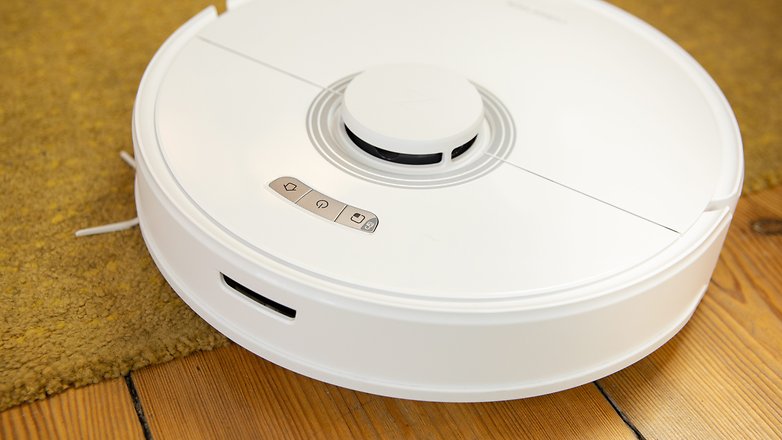
The fact that it uses an infrared sensor for mapping means that the Q7 Max+ does not have a camera—or any kind of visual sensor—but it still deals quite accurately with obstacles such as walls and furniture. However, small objects like carrying cables and the bar of curtains can be a problem if they get in the robot's way. Therefore, it is recommended to leave the path clear for a thorough cleaning. In other words, you will have to do your part in this relationship.
In addition to the LiDAR system, we have drop sensors to prevent the robot from rolling down the stairs. However, even though it is quite accurate, the robot got stuck at least three times during the test period—that's surprising, given that I have been using the robot vac for at least six weeks.
Finally, the companion app offers a generous range of options, ranging from 2D and 3D maps to connection with virtual assistants and cleaning schedules. You can even remote control the Roborock Q7 Max+ and use the robot in up to 18 languages.
Finally, the robot offers three physical buttons on the top of the vacuum cleaner for controlling actions:
- Power/Clean: allows you to turn the robot on or off, as well as start cleaning.
- Spot Clean/Child Lock: allows you to clean in zones and acts as a child lock.
- Dock: returns the robot to the dock.
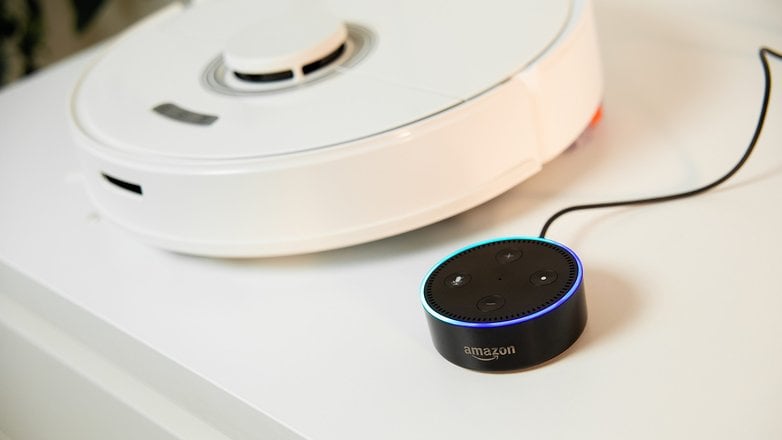
Suction and wiping performance in test
The suction power of the Roborock Q7 Max+ is 4,200 Pa, and the pressure made by the mopping mechanism is 11 oz (something around 312 grams) . For a sturdy 3.7 kg vac robot these characteristics are reflected in excellent cleaning from a suction point of view. However, I must admit right off the bat that the mopping feature is not made for heavy cleaning.
What I liked:
- Versatility of suction modes.
- Broom and suction performance is very precise.
- Battery life of 180 minutes.
- Self-cleaning station is great.
What I didn't like:
- The mopping feature is less efficient than one would think.
- Emptying the dust bin emits a really loud sound.
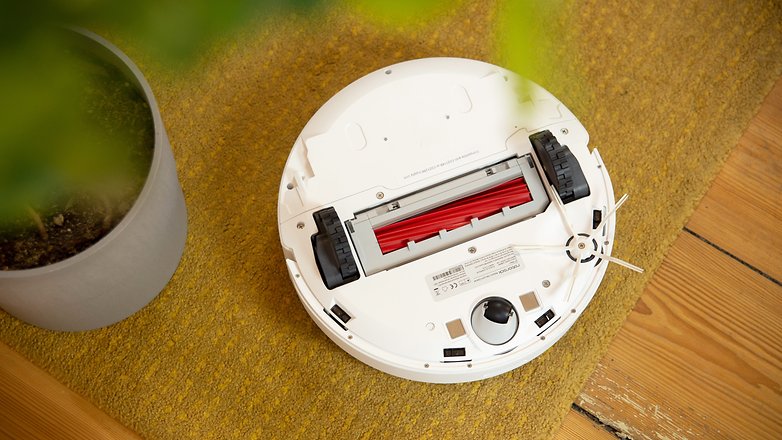
With a rounded shape, this model considered "a mid-range model" offers four suction modes: Quiet, Balanced, Turbo and Max. It's also possible to customize the suction mode by rooms using the Roborock app. Given the design of the Q7 Max+, accessing the corners of rooms is obviously a challenge, however, this is very well done by the Turbo and Max suction modes. Roborock has opted here for a main brush with rubber blades to attract dirt.
We conducted a hands-on test using four types of dirt commonly found in the home. Here the vacuum was set to Turbo mode, and it is worth mentioning that our test scale is accurate to 0.1g. The results are shown in the table below:
| Test volume (g) | Suction volume (g) | Efficiency (%) | |
|---|---|---|---|
| Rice |
|
|
|
| Oats |
|
|
|
| Coffee |
|
|
|
| Sand |
|
|
|
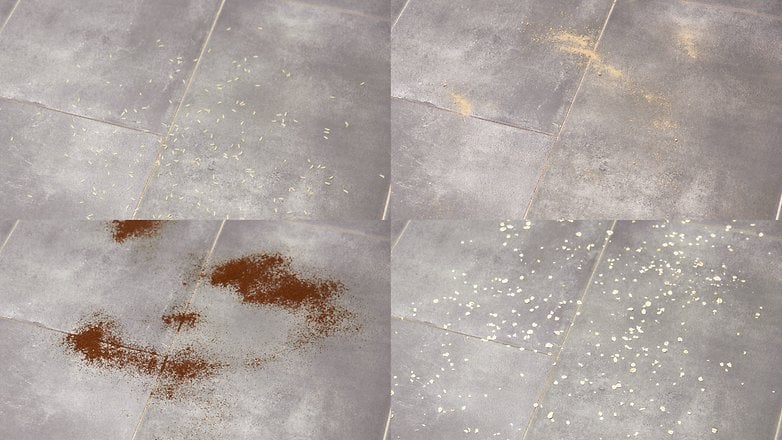
In tests conducted in my apartment, where the floor is PVC, the results were similar to or better than those found in the table above. Especially when associated with the use of the mopping feature.
Using the app, you can also choose cleaning zones, as well as choose which rooms you want to clean in isolation. However, what really makes a difference at the end of the day is that on the Roborock Plus model we have the self-cleaning station.
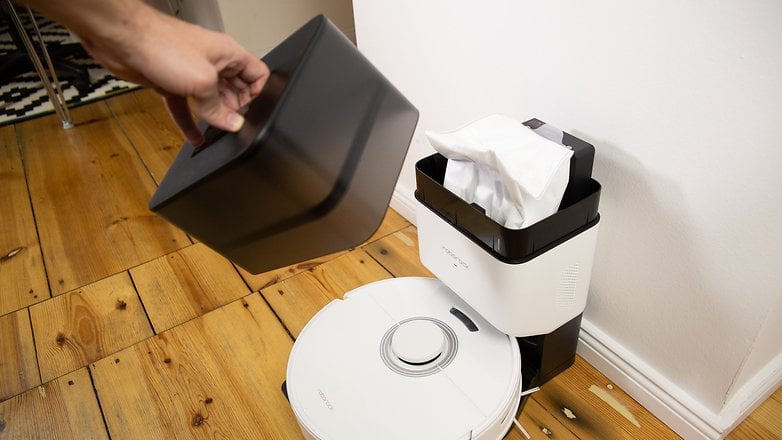
Once the cleaning cycle is finished, the Roborock Q7 Max+ returns to the loading dock and starts the self-cleaning process. This stage can happen automatically or, depending on the schedule, require manual action. This happens because of the noise the cleaning station makes, as the dirt collected in the dustbin is sucked from inside the robot vacuum cleaner into the 2.5L dust bag that remains in the station.
According to the manufacturer, emptying the dust bag should be done every seven weeks on average, however, this will depend on the size of your home and, of course, the volume of accumulated dirt. I have used the Q7 Max+ for six weeks in a 55 m2 apartment and have not yet used 50% of the dust bag volume. You can easily check this information directly in the app's menu under Maintenance.
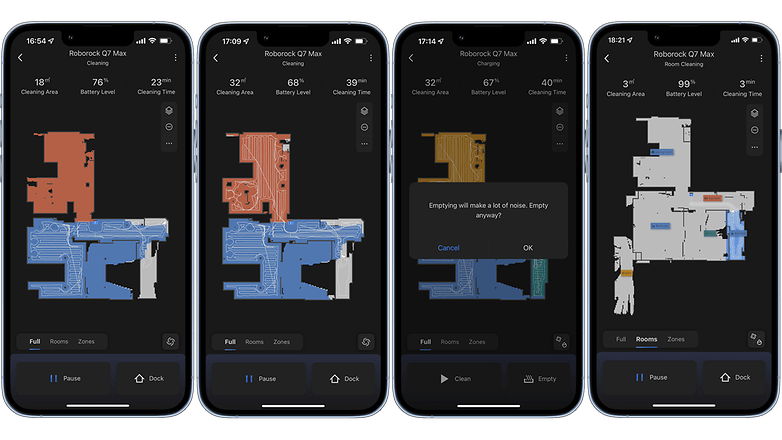
Mopping is only a plus
When it comes to the performance of the mopping function, the Q7 Max+ offers a standard experience. In other words, it does not shine above average. As mentioned above, in the box we have one mop pad only—no disposable cloths in the box. The mop here is washable and reusable—the universe thanks you. Installation of the pad is super easy, depending only on the Velcro and the attachment edge.
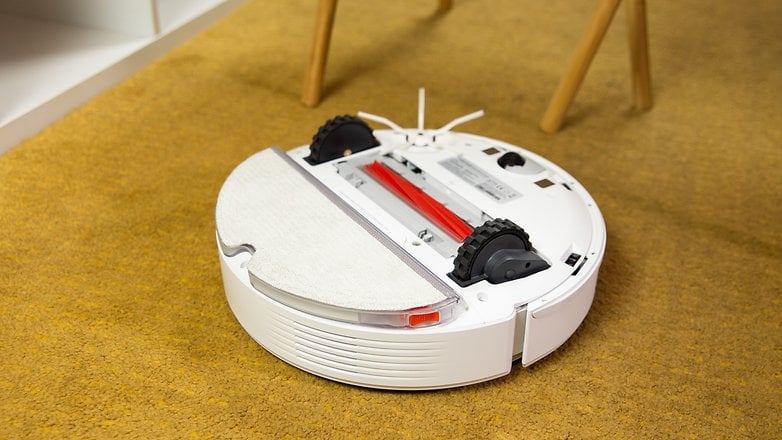
Made of a selection of microfiber, read polyester and nylon, the mop pad does not scratch the floor. However, with a pressure of 11 oz, the cleaning is quite superficial. In other words, over time you will need to do manual stain removal or even a deeper monthly clean. Also, despite the 3-6 month use indication, our tests suggests rather a three-month limit change period.
Another recommendation from Roborock is to use only the brand's solution for cleaning products in the water tank. Since the mopping feature works much more for dust removal after the dirt vacuuming process, usually only water is fine as well. This fact is really important if you don't want to lose the product warranty, as is mentioned in the Roborock user manual.
Also, the cleaning flannel should be removed whenever the robot is vacuuming carpets.
Runtime of 180 minutes
The battery life or runtime in the case of standalone vacuum cleaners is 180 minutes, which can be considered above the market average. Furthermore, charging is quite intuitive since you don't need to do anything for this to happen, you just need the Q7 Max+ to be parked in the cleaning dock.
With a capacity of 5,200 mAh, the device takes up to six hours for a full charge at 28W. Through the status indicator light present on the cleaning station it is possible to see whether the robot is currently charging.
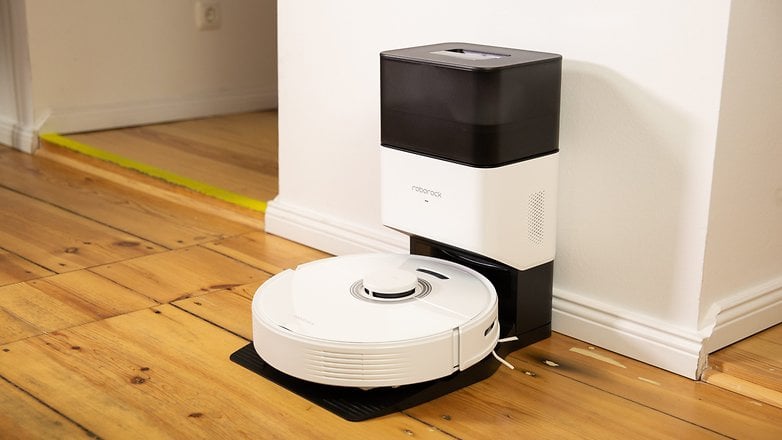
Roborock Q7 Max+ technical specifications
| Technical specifications | |
|---|---|
| Product | Roborock Q7 Max+ |
| Picture | 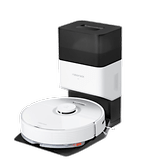 |
| Colors |
|
| Weight |
|
| Overall height (aka "Space under the sofa") |
|
| Max. Suction power |
|
| Loudness (manufacturer's specification) |
|
| Capacity |
|
| Brush |
|
| Cleaning levels |
|
| Mapping |
|
| Battery |
|
| Navigation |
|
| Smart Integration |
|
| Self-emptying feature |
|
| Self-emptying dimensions |
|
| Price |
|
| Offers* |
Is the Roborock Q7 Max+ good?
Automating the cleaning of the house means saving time to perform other tasks. However, for this to happen, it is important that we can trust the smart devices we have at home. In this respect, the Roborock Q7 Max+ proved to be extremely reliable in our tests.
The first point is the cleaning accuracy, whose efficiency in our tests ranged between 96 and 100 percent for floors and 93 percent for carpets. The fact that we have up to four suction modes offers a varied noise range, which allows cleaning at different times of the day without compromising the comfort of householders or even neighbors.
Although the mopping function is described as only average, the Roborock Q7 Max+ is perfectly in line with the industry standard.
The second big highlight of the Roborock Q7 Max+ is without a doubt the self-cleaning function. If you own a robot or conventional vacuum cleaner you know that emptying the dirt container is surely one of the biggest drawbacks of these convenient appliances, right? The Q7 Max+'s self-cleaning station makes sure that you don't have to worry about this for a long time. And that's happiness for me!
Finally, the mapping system is quite reliable and map management is easy to understand using the Roborock app. For all these reasons, I recommend buying the Roborock Q7 Max Plus.
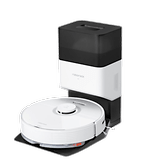
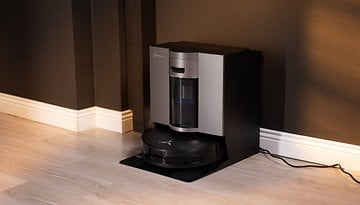
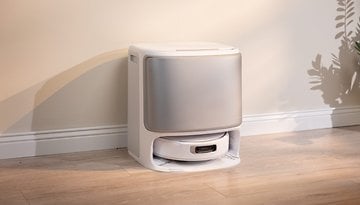
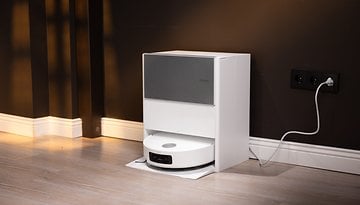
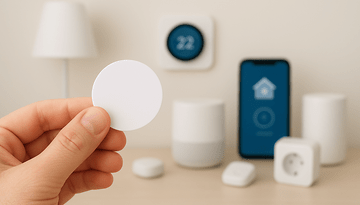
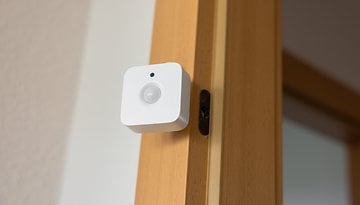
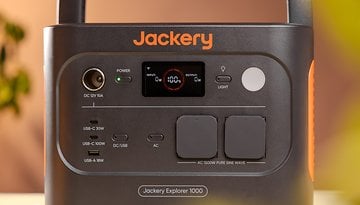








NICE
I will see if I should try it or not